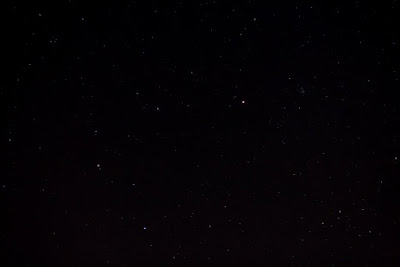This month brought the Consumer Electronics Show (CES), which might as well have stood for Cesspool of Electronic Stupidity, at least in regards to cameras. 45 new point and shoot cams were announced, most of them truly cookie cutter junk cams that all look alike and with specs. that are all the same, even within a manufacturer. Even worse, instead of focusing on usability, most go for gimmick features that do nothing to better the picture taking experience.
While today's cameras are loaded with stupid features, four stand out as the worst of the worst:
Wi-Fi Capability
Face/Smile Detection
GPS/Geo Tagging
Built-in MP3 Player
Which one is the dumbest, vote here and makeyour opinion heard!
Humble Requests:
If you found this informative (or at least entertaining), check out my Examiner page for more great stuff. By doing this, you are helping me pay the bills, which I am grateful for.
Don't forget to pass this link along, either.
For something even better, become a follower.
Friday, January 29, 2010
Sunday, January 24, 2010
Finally a Good All Nighter!
 Sickle of Leo (left), Mars (middle), and Beehive Cluster (upper right).
Sickle of Leo (left), Mars (middle), and Beehive Cluster (upper right).In an usually gloomy winter, clear nights are hard to come by, and that's not even factoring in the annoyingly bright moon, which plays havoc with astrophotography but also always seems to be out on those clear winter nights. Well, Wednesday night was the exception here. It was clear all night and the moon, not even to first quarter, quickly got out of the way. Some long exposure constellation pictures will be coming soon, but above is a quick 10 second shot of a near opposition Mars between the Sickle of Leo and the Beehive Cluster.
Below are a couple of pictures from late last year. Having a frozen over observing pad gives one a lot of time to play around in Photoshop.
Below are a couple of pictures from late last year. Having a frozen over observing pad gives one a lot of time to play around in Photoshop.
 The Great Andromeda Galaxy (M31) and Satellites
The Great Andromeda Galaxy (M31) and SatellitesHumble requests:
If you found this informative (or at least entertaining), check out my Examiner page for more great stuff. By doing this, you are helping me pay the bills, which I am grateful for.
Monday, January 18, 2010
What Exactly is an Apochromat?
The photography/astronomy world is loaded with technical jargon that will undoubtedly confuse beginners. In the area of lenses, it is common to see the word “apochromatic,” or “apo” for short, used to describe high-grade lenses or telescopes. So what does “apochromatic” mean?
The term apochromatic/apo is used to designate any lens that minimizes color dispersion. In an even more basic description, apo lenses bring all colors of visible light to a single focus point. Before going any further, some basic scientific knowledge is required.
All colors we see are part of the electromagnetic spectrum. In fact, visible light is just a tiny sliver. From radio waves on one end to gamma rays on the other, each type of energy on the spectrum has a different wavelength, measured in nanometers (one billionth of a meter). Although covering just a tiny portion of the spectrum, visible light, red, orange, yellow, green, blue, indigo, and violet (think ROY G. BIV) all have a different wavelength, which complicates the process of bringing them to a single focus point over a short distance, which is exactly what a lens seeks to do. If all light is not focused at a single point, image quality will degrade. Images will appear soft and they will often show chromatic aberration, which appears as false color fringes in high contrast situations. The good news is that there are three main ways around the problem.
1. The first, and oldest, is to have a lens with a long focal ratio that gives the light a longer path to get in focus, thus minimizing focal length differences for different wavelengths of light. In the old days, refracting astronomical telescopes had long focal ratios, often around f15, and showed no false color except on the brightest of objects. In practical terms, a telescope with a four inch lens would be five feet long, which is not very portable. In photographic terms, long focal ratios require slow shutter speeds, which are often undesirable and necessitate use of a tripod in all but the brightest lighting for most people.
2. The second way, the quick fix, is through filter usage. Filters can be threaded onto camera lenses or telescope eyepieces to minimize the false color. Unfortunately, these filters can introduce inaccurate color casts to the image and also reduce the amount of light passing through the lens, which will result in longer shutter speeds on cameras and dimmer views in telescopes.
3. The third, and by far best method, is by utilizing special glass that will bring all colors to a single focus point in the first place.
Unfortunately, APO as an acronym could stand for “another paycheck obliterated.” Special high-grade glass that will bring all the colors to focus at the same point is expensive. Added to this is the fact that these types of glass are hard to work with, which means higher labor costs. The good news is that, for people who demand the highest image quality possible, apo lenses are worth the investment. Fully corrected for chromatic aberration, the false color will disappear. An added bonus is increased correction for spherical aberration, which results in sharper images.
Keeping in mind that pictures are worth a thousand words, I put two telescopes, one achro and the other apo, through a false color optical torture test: an extremely high contrast situation courtesy of tree branches and a bright sky.
Photo notes: All photos (except the last) are heavy crops taken from an original.
Photo 1 was taken with an Orion 120mm f8.3 non-apochromatic refracting telescope ($300 OTA). The false color is very obnoxious.
Photo 2 was taken with the same scope but with an aperture mask that made it into a 60mm f16. False color is greatly reduced, but exposure requires a shutter speed four times longer than photo 1.
Photo 3 was taken with an Orion ED80 f7.5 apo refractor ($500 at release). Absolutely no false color at all, but this 80mm scope costs $200 more than the 120mm model.
Photo 4 is the full, uncropped version of photo 1 to illustrate just how tiny the crops are. Viewed in full, the false color does not appear so extreme. However, the more the image is cropped, the more obvious it becomes. For astronomical uses, which are often far less forgiving than most terrestrial photography, even a full view photo will show ugly violet rings around brighter stars.




As a final note, apo lenses often go by many different names (LD (low dispersion), ED (extra low dispersion), (SAPO) super apochromat, SLD (super low dispersion), fluorite, and FPL-53). The terms all are more similar than different in their final goal: striving for better images, but that doesn't stop people, especially astronomers, from debating what constitutes a “true” apochromat. For me, an apochromat is any lens that shows no false color visually or photographically. Keep it simple.
The term apochromatic/apo is used to designate any lens that minimizes color dispersion. In an even more basic description, apo lenses bring all colors of visible light to a single focus point. Before going any further, some basic scientific knowledge is required.
All colors we see are part of the electromagnetic spectrum. In fact, visible light is just a tiny sliver. From radio waves on one end to gamma rays on the other, each type of energy on the spectrum has a different wavelength, measured in nanometers (one billionth of a meter). Although covering just a tiny portion of the spectrum, visible light, red, orange, yellow, green, blue, indigo, and violet (think ROY G. BIV) all have a different wavelength, which complicates the process of bringing them to a single focus point over a short distance, which is exactly what a lens seeks to do. If all light is not focused at a single point, image quality will degrade. Images will appear soft and they will often show chromatic aberration, which appears as false color fringes in high contrast situations. The good news is that there are three main ways around the problem.
1. The first, and oldest, is to have a lens with a long focal ratio that gives the light a longer path to get in focus, thus minimizing focal length differences for different wavelengths of light. In the old days, refracting astronomical telescopes had long focal ratios, often around f15, and showed no false color except on the brightest of objects. In practical terms, a telescope with a four inch lens would be five feet long, which is not very portable. In photographic terms, long focal ratios require slow shutter speeds, which are often undesirable and necessitate use of a tripod in all but the brightest lighting for most people.
2. The second way, the quick fix, is through filter usage. Filters can be threaded onto camera lenses or telescope eyepieces to minimize the false color. Unfortunately, these filters can introduce inaccurate color casts to the image and also reduce the amount of light passing through the lens, which will result in longer shutter speeds on cameras and dimmer views in telescopes.
3. The third, and by far best method, is by utilizing special glass that will bring all colors to a single focus point in the first place.
Unfortunately, APO as an acronym could stand for “another paycheck obliterated.” Special high-grade glass that will bring all the colors to focus at the same point is expensive. Added to this is the fact that these types of glass are hard to work with, which means higher labor costs. The good news is that, for people who demand the highest image quality possible, apo lenses are worth the investment. Fully corrected for chromatic aberration, the false color will disappear. An added bonus is increased correction for spherical aberration, which results in sharper images.
Keeping in mind that pictures are worth a thousand words, I put two telescopes, one achro and the other apo, through a false color optical torture test: an extremely high contrast situation courtesy of tree branches and a bright sky.
Photo notes: All photos (except the last) are heavy crops taken from an original.
Photo 1 was taken with an Orion 120mm f8.3 non-apochromatic refracting telescope ($300 OTA). The false color is very obnoxious.
Photo 2 was taken with the same scope but with an aperture mask that made it into a 60mm f16. False color is greatly reduced, but exposure requires a shutter speed four times longer than photo 1.
Photo 3 was taken with an Orion ED80 f7.5 apo refractor ($500 at release). Absolutely no false color at all, but this 80mm scope costs $200 more than the 120mm model.
Photo 4 is the full, uncropped version of photo 1 to illustrate just how tiny the crops are. Viewed in full, the false color does not appear so extreme. However, the more the image is cropped, the more obvious it becomes. For astronomical uses, which are often far less forgiving than most terrestrial photography, even a full view photo will show ugly violet rings around brighter stars.




As a final note, apo lenses often go by many different names (LD (low dispersion), ED (extra low dispersion), (SAPO) super apochromat, SLD (super low dispersion), fluorite, and FPL-53). The terms all are more similar than different in their final goal: striving for better images, but that doesn't stop people, especially astronomers, from debating what constitutes a “true” apochromat. For me, an apochromat is any lens that shows no false color visually or photographically. Keep it simple.
Like What You Just Read?
Why not check out other great stuff
about photography,
astronomy,
associated
gear, and how
to use it.
Think someone else would find this informative (or at least entertaining)? Use the buttons below to share!
Think someone else would find this informative (or at least entertaining)? Use the buttons below to share!
Thursday, January 14, 2010
Mars Coming to Opposition, Won't be Size of the Full Moon
 Mars on January 12. It has a long way to go in 2 weeks to be the size of the full moon.
Mars on January 12. It has a long way to go in 2 weeks to be the size of the full moon.Later this month, Mars will be coming to opposition, which is when Mars is directly opposite the Sun in the sky as seen from Earth, so Mars rises and sets opposite the Sun, making for an all night event.. Because of the straight alignment of Sun, Earth, Mars, this is the point in time where Mars makes its closest approach to Earth.
This time, the approach won't be too close, with the planets only coming within about 61 million miles of each other. Still, the change in Mars' brightness will be apparent. Of all the planets, Mars has the most elliptical (oval-like) orbit. This results in dramatic changes in brightness. At its farthest from earth, Mars shines at about +1.3 magnitude. When Mars made its very close 2003 approach, it was up to -3 magnitude, or about 40 times brighter than at its dimmest when the planet came to about 34 million miles from Earth.
This year, opposition will occur on January 27 with the planet peaking in brightness at around -1.3 magnitude, about as bright as the brightest star in our sky, Sirius. Obviously, this is not nearly as large or as bright as the full moon, which lights up the sky at -12 magnitude.
This opposition will also mark the first time since 1994 that missions to Mars haven't been launched at this close approach. Both the American Mars Science Laboratory and Russian Phobos-Grunt probes are being put on hold until the next opposition in 2012.
Still, don't be dismayed at the fact that this opposition will not be one of the best. Due to the timing, Mars will be very high in the sky, which is great for high-power telescope observing, which was anything but the case for the “great” 2003 approach. Unfortunately, don't expect to see any trees on Mars.
Humble request
If you found this informative (or at the very least entertaining) check out my Examiner page and be sure to pass these links along.
Sunday, January 3, 2010
The genius, the stupid, and the historic
As the first decade of the third millennium ends, it is irresistible to take a look back at what has transpired over the past year, and decade for that matter. Here are three look-backs at the world of photography that showcase how we got to where we are today.
The genius: The Cammys
This is a quick look back at the best photography had to offer in 2009. Explore the best in cameras to the greater impact of photography on the world.
The stupid: The Golden Garbage Cans
Here is a quick look back on the worst photography had to offer in 2009. From flop cameras to useless features to camera-inspired stupidity, it's all here!
The historic: Reviewing the Digital Decade
As the the first decade of the third millennium closes, one can't help but take a look back. 1999 was the true birth of digital photography. In the intervening 10 years, many innovations were made, but only a select few were industry-altering.
The genius: The Cammys
This is a quick look back at the best photography had to offer in 2009. Explore the best in cameras to the greater impact of photography on the world.
The stupid: The Golden Garbage Cans
Here is a quick look back on the worst photography had to offer in 2009. From flop cameras to useless features to camera-inspired stupidity, it's all here!
The historic: Reviewing the Digital Decade
As the the first decade of the third millennium closes, one can't help but take a look back. 1999 was the true birth of digital photography. In the intervening 10 years, many innovations were made, but only a select few were industry-altering.
Saturday, January 2, 2010
January Skies: What's Up This Month?
 Yes it's January and yes, that's Vega of the Summer Triangle. Things will get better!
Yes it's January and yes, that's Vega of the Summer Triangle. Things will get better!Now that it is January, we are deep into the cloud season. Like December, clear nights in January should be cherished, especially considering the sights to be seen and the fact that January nights are still among the longest nights of the year. The unique fun of observing (or even better, photographing), the same star on the set and rise during one night is something you should try should the sky allow. Vega and Deneb, two bright stars of the Summer Triangle, make great targets.
On to more traditional observing. Because of the Long nights, January allows for observing a wide range of constellations from three of the four seasons. Despite it being January, at least as the month starts, Lyra and Cygnus are still visible under dark skies low in the Northwest! Take a last look at the fall constellations as the sun sets, probe the winter constellations in the dead of night, and race the light to behold the spring and early summer constellations (the aforementioned Lyra and Cygnus) as they race the Sun in the Eastern sky. There's way too much to be seen for going into detail here, so grab your sky atlas and some warm clothing to prepare for an all night observing session that will take you through the majority of the year.
Last but not least, planets. This is really the last month to view Jupiter telescopically. By the end of the month, Jupiter will be a twilight object low in the Southwestern sky, so forget the telescope by then. Mars will continue to brighten as it passes from mid way between Leo and into Cancer (to about 3 degrees from the Beehive). It will reach opposition on January 29. Grab a telephoto lens and your SLR for and take advantage of this great photo-op. Neptune is still relatively close to Jupiter, so now is a great time to see it, but you'll need to crank up the power to distinguish it from a star. Saturn is still holding station in Virgo and last but not least, Mercury will put on one of its best morning shows of the year toward the end of the month after first appearing around January 12.
There's a lot to see this month if the clouds cooperate. So if the night is clear, go on out for a look.
January Visual Observing Highlights
January 1: Sirius is almost due South at midnight (Happy New Year from the Dog Star!)
January 2: Like last month, the nearly full Moon is very close to the Beehive Cluster in Cancer
January 3: A cosmic triangle of the Moon, Mars, and Regulus
January 4: Date of latest sunrise
January 10: Mercury starts to rapidly ascend in the Southeast
January 11: The Moon scrapes Antares
January 16: Young moon just after sunset. Test your Southwest horizon.
January 17: The thin waxing crescent makes its closest approach to Jupiter
January 20: Mercury is at its highest, about 10 degrees up in the Southeast, and it'll hand around awhile
January 24-25: The Moon approaches the Pleiads to either side
January 29: The Moon, Mars (at opposition today), and the Beehive are within six degrees.
Late January: Jupiter is now a dusk object, and makes a nice addition to sunset photos.
January Visual Observing Highlights
January 1: Sirius is almost due South at midnight (Happy New Year from the Dog Star!)
January 2: Like last month, the nearly full Moon is very close to the Beehive Cluster in Cancer
January 3: A cosmic triangle of the Moon, Mars, and Regulus
January 4: Date of latest sunrise
January 10: Mercury starts to rapidly ascend in the Southeast
January 11: The Moon scrapes Antares
January 16: Young moon just after sunset. Test your Southwest horizon.
January 17: The thin waxing crescent makes its closest approach to Jupiter
January 20: Mercury is at its highest, about 10 degrees up in the Southeast, and it'll hand around awhile
January 24-25: The Moon approaches the Pleiads to either side
January 29: The Moon, Mars (at opposition today), and the Beehive are within six degrees.
Late January: Jupiter is now a dusk object, and makes a nice addition to sunset photos.
Subscribe to:
Comments (Atom)















